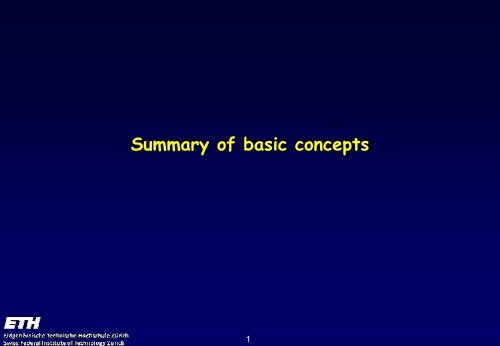Summary of basic concepts - Communication Systems Group
Summary of basic concepts - Communication Systems Group Summary of basic concepts - Communication Systems Group
- Page 3 and 4: Channel propertiesAbstraction of a
- Page 5: NodesEnd nodes / end systems• Sou
- Page 8 and 9: Resource sharing MultiplexingShare
- Page 11 and 12: Inter-process communication• Proc
- Page 13: OSI Reference ModelAPAPapplicationp
Channel propertiesAbstraction <strong>of</strong> a link: Channel• Depend on link medium and mode <strong>of</strong> usage• Point-to-point vs. broadcast channel• Propagation delay• Capacity (depending on bandwidth and modulation/codingused)• Transmission errors (bit errors, error bursts)All these parameters may be time variant3
Point-to-point and broadcast linksPoint-to-pointbroadcast4
NodesEnd nodes / end systems• Source• SinkIntermediate nodes / intermediate systems• Both source and sink capable <strong>of</strong> forwarding data5
Problems to be solved• Data transmission on a link• Naming and addressing (identification <strong>of</strong> objects)• Resource sharing• Co-ordination <strong>of</strong> access to shared resources• Fairness• Resilience against failures• Error handling• Routing• Flow and congestion control• Charging and accounting7
Resource sharing MultiplexingSharedlinkMultiplexing techniques• Frequency division multiplexing (FDM): Data flows mapped onto differentfrequency ranges• Time division multiplexing (TDM): Data flows mapped onto different timeranges (synchronous, asynchronous/statistical)• Space division multiplexing: Data flows occupy different spatial areas (e.g.,multi-wire cable)• Code division multiplexing (CDM): Flows mapped onto different encodings8
Asynchronous TDM / statistical TDM• Time-division multiplexing• On-demand resources are dynamically allocated• Packetization <strong>of</strong> data stream• Packets from different sources are interleaved on link• Short-term storage <strong>of</strong> packets required (depends ontraffic statistics) buffering• Buffer overflow is called congestion• Congestion avoidance, congestion control– Short term: signalling, backpressure– Medium term: throttling and policing sources– Long term: capacity planning, traffic management9
Inter-process communication• Process-to-processcommunication, not justhost-to-host• Abstractions• Message passing• Streams• Request-reply• Shared memoryaccess11
Managing complexity Layering• Hierarchical layering• Based on service provider / service user paradigm• Each layer is assigned his specific task (theoretically)n+1-protocolLayer n-service Layer n12
OSI Reference ModelAPAPapplicationpresentationsessiontransportnetworklinkphysicalphysical medium13



